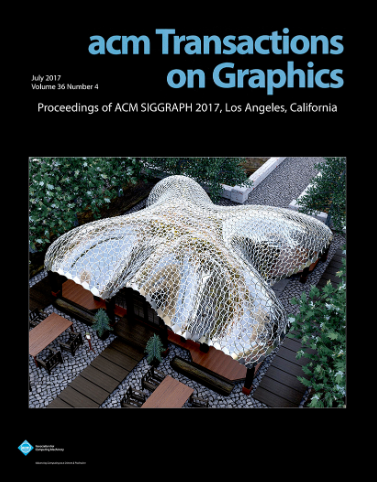LetsGo:通过激光雷达辅助高斯原型进行大规模车库建模和渲染
IF 9.5
1区 计算机科学
Q1 COMPUTER SCIENCE, SOFTWARE ENGINEERING
引用次数: 0
摘要
大型车库是无处不在但又错综复杂的场景,其单调的颜色、重复的图案、反光的表面和透明的车辆玻璃给我们带来了独特的挑战。传统的运动结构(SfM)摄像机姿态估计和三维重建方法在这些环境中往往会因为对应关系构造不佳而失败。为了应对这些挑战,我们推出了用于大规模车库建模和渲染的激光雷达辅助高斯拼接框架 LetsGo。我们开发了一种手持式扫描仪 Polar,它配备了 IMU、激光雷达和鱼眼相机,便于准确采集数据。利用该极点设备,我们展示了 GarageWorld 数据集,该数据集由八个具有不同几何结构的广阔车库场景组成,我们将公开该数据集,供进一步研究使用。我们的方法表明,Polar 设备收集的激光雷达点云可显著增强用于车库场景建模和渲染的一套三维高斯拼接算法。我们引入了一种新颖的深度规整器,可有效消除渲染图像中的浮动伪影。此外,我们还提出了一种专为细节等级(LOD)渲染设计的多分辨率三维高斯表示法。这包括针对单个级别的调整缩放因子和随机分辨率级别训练方案,以优化不同分辨率的高斯。这种表示法可通过基于网络的渲染器在轻量级设备上高效渲染大规模车库场景。在 GarageWorld 数据集以及 ScanNet++ 和 KITTI-360 上的实验结果表明,我们的方法在渲染质量和资源效率方面都具有优势。本文章由计算机程序翻译,如有差异,请以英文原文为准。
LetsGo: Large-Scale Garage Modeling and Rendering via LiDAR-Assisted Gaussian Primitives
Large garages are ubiquitous yet intricate scenes that present unique challenges due to their monotonous colors, repetitive patterns, reflective surfaces, and transparent vehicle glass. Conventional Structure from Motion (SfM) methods for camera pose estimation and 3D reconstruction often fail in these environments due to poor correspondence construction. To address these challenges, we introduce LetsGo, a LiDAR-assisted Gaussian splatting framework for large-scale garage modeling and rendering. We develop a handheld scanner, Polar, equipped with IMU, LiDAR, and a fisheye camera, to facilitate accurate data acquisition. Using this Polar device, we present the GarageWorld dataset, consisting of eight expansive garage scenes with diverse geometric structures, which will be made publicly available for further research. Our approach demonstrates that LiDAR point clouds collected by the Polar device significantly enhance a suite of 3D Gaussian splatting algorithms for garage scene modeling and rendering. We introduce a novel depth regularizer that effectively eliminates floating artifacts in rendered images. Additionally, we propose a multi-resolution 3D Gaussian representation designed for Level-of-Detail (LOD) rendering. This includes adapted scaling factors for individual levels and a random-resolution-level training scheme to optimize the Gaussians across different resolutions. This representation enables efficient rendering of large-scale garage scenes on lightweight devices via a web-based renderer. Experimental results on our GarageWorld dataset, as well as on ScanNet++ and KITTI-360, demonstrate the superiority of our method in terms of rendering quality and resource efficiency.
求助全文
通过发布文献求助,成功后即可免费获取论文全文。
去求助
来源期刊

ACM Transactions on Graphics
工程技术-计算机:软件工程
CiteScore
14.30
自引率
25.80%
发文量
193
审稿时长
12 months
期刊介绍:
ACM Transactions on Graphics (TOG) is a peer-reviewed scientific journal that aims to disseminate the latest findings of note in the field of computer graphics. It has been published since 1982 by the Association for Computing Machinery. Starting in 2003, all papers accepted for presentation at the annual SIGGRAPH conference are printed in a special summer issue of the journal.
 求助内容:
求助内容: 应助结果提醒方式:
应助结果提醒方式:


